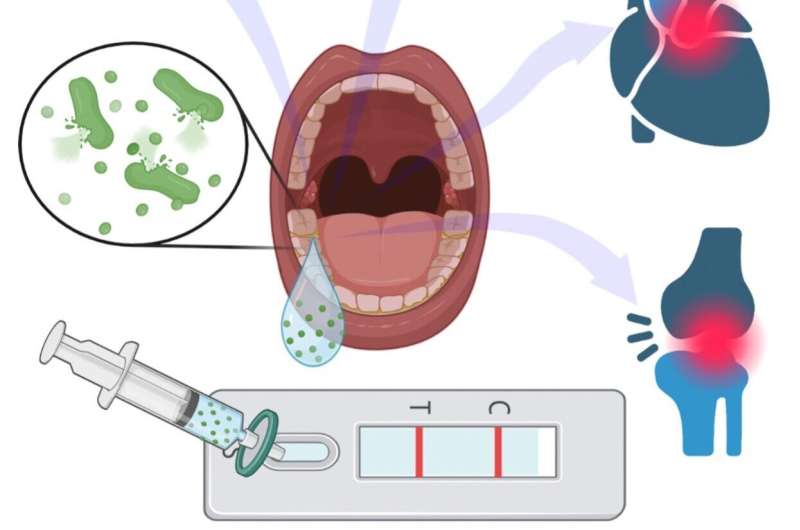This article has been reviewed according to Science X's editorial process and policies. Editors have highlighted the following attributes while ensuring the content's credibility:
fact-checked
trusted source
proofread
Engineers create at-home test that can diagnose gingivitis

Engineers at the University of Cincinnati have developed a new device that can warn consumers about early risks of tooth decay from diseases such as gingivitis and periodontitis.
Gingivitis, the earliest form of gum disease, is caused by bacteria. But not just any bacteria.
The problem for researchers was getting a device to single out the particular type responsible for the disease, said Andrew Steckl, an Ohio Eminent Scholar and distinguished research professor in UC's College of Engineering and Applied Science.
"It's been quite the challenge to get to the point where we can detect this toxin created by the bacteria responsible for gingivitis," he said.
Steckl and UC Senior Research Associate Daewoo Han collaborated with Sancai Xie, a principal scientist at Procter & Gamble Co., and described their results in a paper published in Sensors and Diagnostics.
Steckl's research team has been exploring biosensing for various applications. They studied stress hormones in sweat in collaboration with the Air Force Research Lab at Wright-Patterson Air Force Base. Now they are studying saliva.
"There are good reasons to use saliva," he said. "It's relatively plentiful and easy to obtain through noninvasive methods. And saliva has a lot of important elements that can act as indicators of your health."
Bacteria from gingivitis can travel through the bloodstream, leading to cardiovascular disease and other serious health problems, Steckl said.
But saliva is a complicated biofluid, Han said.
"We wanted to target a biomarker in saliva. But saliva is hard to use," said Han, the study's lead author.
Researchers pretreated the sample using potato starch to remove a protein called amylase that could interfere with the test results. Their test uses antibodies that react to the endotoxins found in the bacteria.
Developing a sensor required precise selectivity and sensitivity, Steckl said.
"Daewoo worked very hard on many dead-ends before he had success," Steckl said. "I tell my students that research is search, search and re-search until you find the answer."
At-home health testing has been available for generations in niche uses such as detecting pregnancy. But the COVID-19 pandemic introduced a wide audience of consumers to the concept of monitoring their health with new technology.
The at-home testing industry is expected to generate $45 billion annually by 2031, according to Allied Market Research.
Steckl said he sees a lot of opportunity for new consumer products.
"Our results definitely show promise," Steckl said. "Sometimes it comes easy. Most of the time you have to persevere."
More information: Daewoo Han et al, Salivary endotoxin detection using combined mono/polyclonal antibody-based sandwich-type lateral flow immunoassay device, Sensors & Diagnostics (2023). DOI: 10.1039/D3SD00158J



















